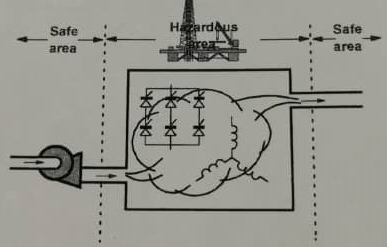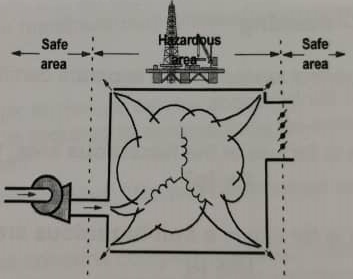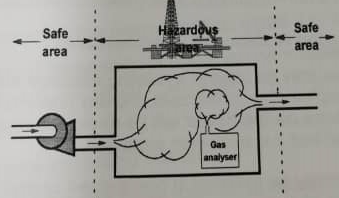The applicable pressurising techniques depend upon the condition and on the constituents of the release as follows:
- Static pressurisation.
- Pressurisation with continuous flow;
- Pressurisation with leakage compensation;
- Pressurisation with continuous dilution;
Static pressurisation #
This form of pressurisation has limited applications and is not widely used. The technique involves pressuring and sealing the enclosure in a non-hazardous area prior to transportation into a hazardous area. The seals of the enclosure must be very good to minimise leakage once the source of the safe gas is disconnected.
Pressurisation with continuous flow #
In this variant there is a continual flow of the safe gas through the enclosure. The safe gas maintains the over-pressure, and may also be used to cool hot parts within the enclosure such as the windings of a pressurised motor etc. The flow rate of the safe gas is set at a level which prevents the temperature of the hot parts exceeding their temperature limit, ensuring that the enclosure operates within it’s T-class.

Pressurisation with leakage compensation #
This method of pressurisation is used when enclosures are poorly sealed at their joints. The system is purged in the usual manner with the damper at the exhaust duct open. Then the damper is closed and the flow of protective gas reduced to a level just sufficient to compensate for leakage occurring at the seals/joints of the enclosure.

Continuous dilution #
The analysis of flammable gases usually takes place in pressurised enclosures. A sample of gas will be drawn into a gas analyser and, after analysis, will be expelled into the interior of the pressurised enclosure. The safe gas must maintain the over-pressure during and after the initial purge, and the flow-rate of the safe gas must be adjusted to dilute the internal concentration of the gas/air mixture to well below the LEL.

Gas detectors may be installed to verify that the atmosphere remains non-hazardous.




